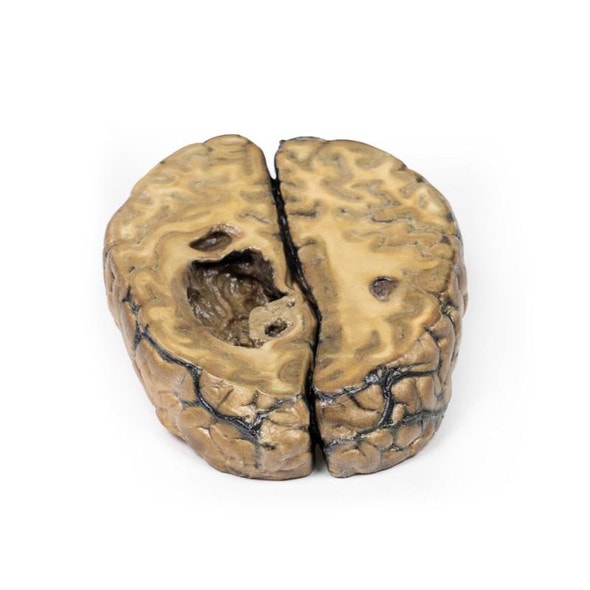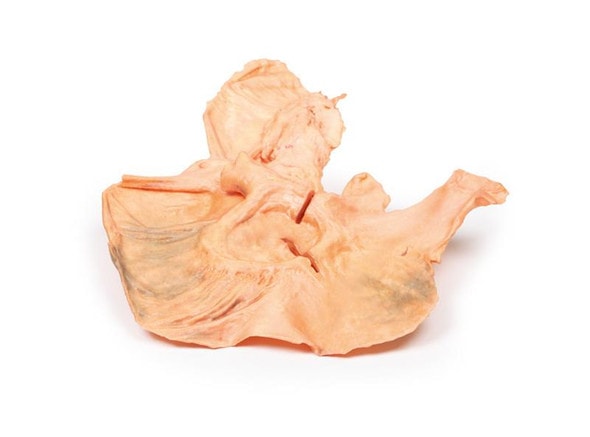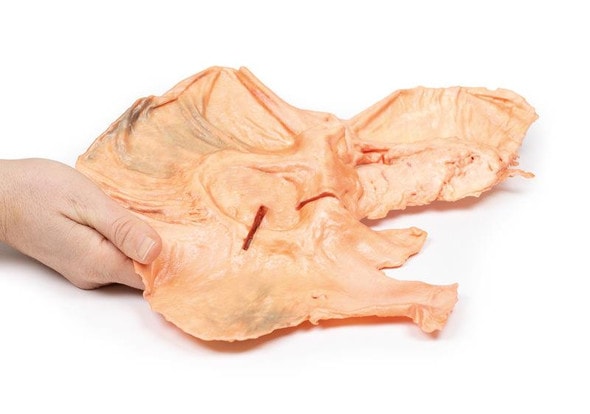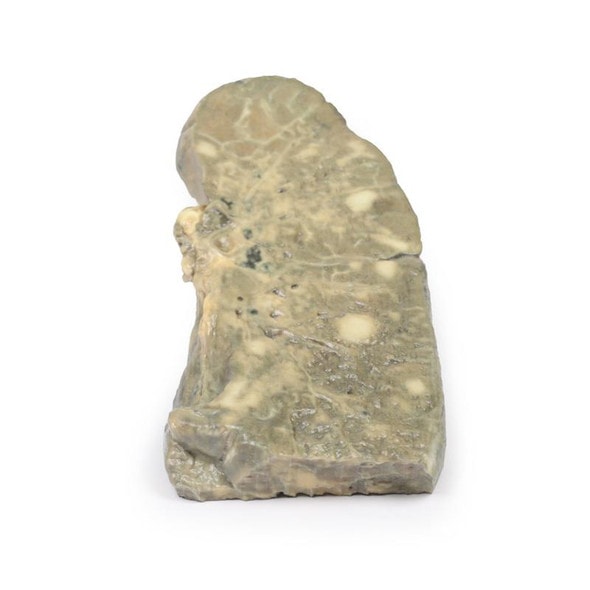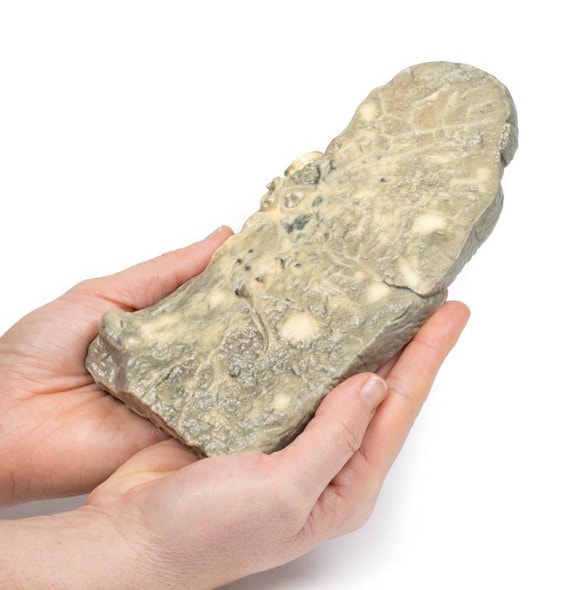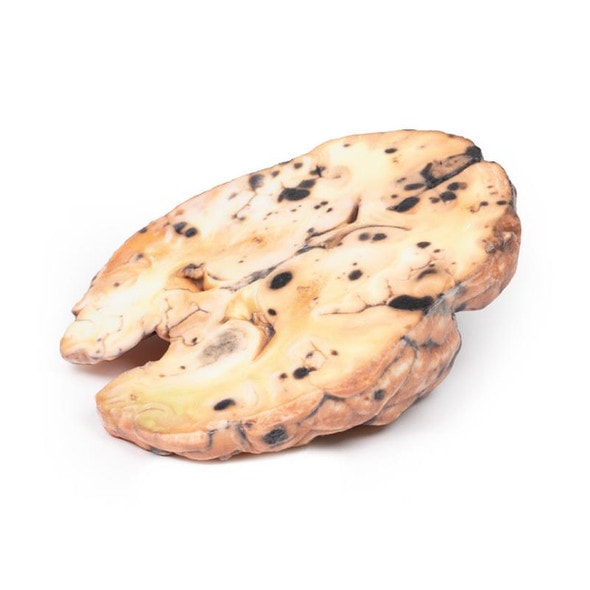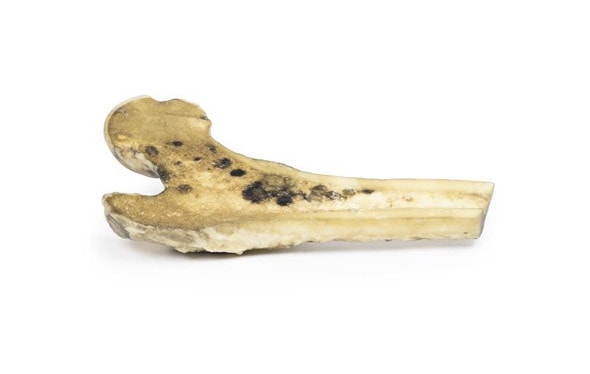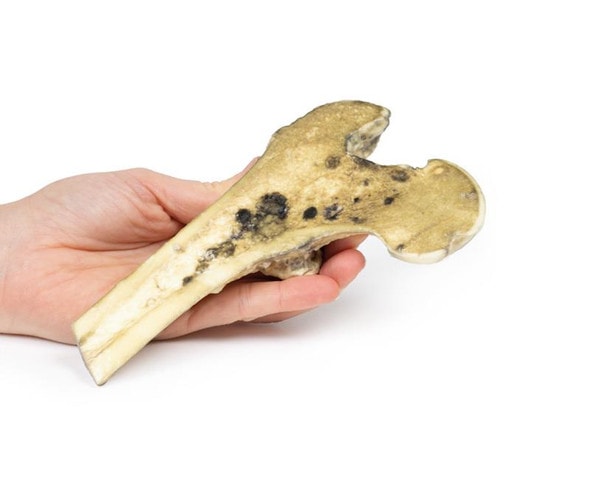Description
Developed from real patient case study specimens, the 3D printed anatomy model pathology series introduces an unmatched level of realism in human anatomy models. Each 3D printed anatomy model is a high-fidelity replica of a human cadaveric specimen, focusing on the key morbidity presentations that led to the deceasement of the patient. With advances in 3D printing materials and techniques, these stories can come to life in an ethical, consistently reproduceable, and easy to handle format. Ideal for the most advanced anatomical and pathological study, and backed by authentic case study details, students, instructors, and experts alike will discover a new level of anatomical study with the 3D printed anatomy model pathology series.
Clinical History
A 56-year-old male underwent a total gastrectomy and splenectomy for gastric adenocarcinoma. Over a period of two months, he developed a progressively unsteady gait, increasing weakness of his left hand and frontal headaches associated with nausea and vomiting. Imaging revealed a lesion in the right frontal lobe. He underwent a craniotomy with resection of the lesion, which was confirmed metastatic gastric adenocarcinoma. He experienced gradual increasing symptoms as well as jaundice, deteriorating consciousness and papilloedema from increased intracranial pressure. Repeat imaging revealed recurrence of the right frontal metastatic lesion as well as liver metastases. The patient died 9 months after his initial gastrectomy surgery.
Pathology
This brain specimen is cut in the coronal plane. A circumscribed, variegated, pink-grey tumor is evident in the right frontal lobe. The tumor is involving the grey and white matter. Compression of the right lateral ventricle by the lesion is apparent with shift of the midline structures also seen.
Further Information
Stomach cancer is one of the most common causes of cancer-related death worldwide. Risk factors include male gender, diet, smoking and chronic Helicobacter pylori infection. The most common sites for metastases of gastric adenocarcinoma are the liver, peritoneum, lungs, and bones. Brain metastases are rare, occurring in <1% of cases. Isolated brain metastases are very uncommon with them being more commonly seen in disseminated disease and associated with a poor prognosis. Palliative treatment may include surgery, radiotherapy, steroid, chemotherapy, or a combination thereof.
Advantages of 3D Printed Anatomical Models
- 3D printed anatomical models are the most anatomically accurate examples of human anatomy because they are based on real human specimens.
- Avoid the ethical complications and complex handling, storage, and documentation requirements with 3D printed models when compared to human cadaveric specimens.
- 3D printed anatomy models are far less expensive than real human cadaveric specimens.
- Reproducibility and consistency allow for standardization of education and faster availability of models when you need them.
- Customization options are available for specific applications or educational needs. Enlargement, highlighting of specific anatomical structures, cutaway views, and more are just some of the customizations available.
Disadvantages of Human Cadavers
- Access to cadavers can be problematic and ethical complications are hard to avoid. Many countries cannot access cadavers for cultural and religious reasons.
- Human cadavers are costly to procure and require expensive storage facilities and dedicated staff to maintain them. Maintenance of the facility alone is costly.
- The cost to develop a cadaver lab or plastination technique is extremely high. Those funds could purchase hundreds of easy to handle, realistic 3D printed anatomical replicas.
- Wet specimens cannot be used in uncertified labs. Certification is expensive and time-consuming.
- Exposure to preservation fluids and chemicals is known to cause long-term health problems for lab workers and students. 3D printed anatomical replicas are safe to handle without any special equipment.
- Lack of reuse and reproducibility. If a dissection mistake is made, a new specimen has to be used and students have to start all over again.
Disadvantages of Plastinated Specimens
- Like real human cadaveric specimens, plastinated models are extremely expensive.
- Plastinated specimens still require real human samples and pose the same ethical issues as real human cadavers.
- The plastination process is extensive and takes months or longer to complete. 3D printed human anatomical models are available in a fraction of the time.
- Plastinated models, like human cadavers, are one of a kind and can only showcase one presentation of human anatomy.
Advanced 3D Printing Techniques for Superior Results
- Vibrant color offering with 10 million colors
- UV-curable inkjet printing
- High quality 3D printing that can create products that are delicate, extremely precise, and incredibly realistic
- To improve durability of fragile, thin, and delicate arteries, veins or vessels, a clear support material is printed in key areas. This makes the models robust so they can be handled by students easily.







